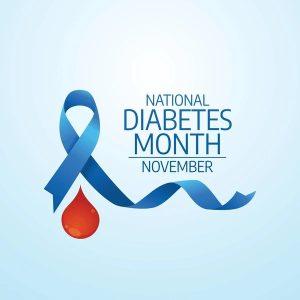National Diabetes Month: Strengthening Prevention, Screening, and Self-Management

Key Facts:
- An estimated 38.4 million Americans have diabetes; roughly 8.7 million are undiagnosed (CDC, 2024).
- About 96 million U.S. adults have prediabetes, and more than 80 percent do not know it.
- Average medical expenditures for people with diagnosed diabetes are 2.6 times higher than for those without the disease.
- Participation in a CDC-recognized Diabetes Prevention Program (DPP) can reduce progression from prediabetes to type 2 diabetes by up to 58 percent (71 percent for adults ≥60).
Editor's Note
This article is part of the BHM Healthcare Awareness Series, designed to provide quick, ready-to-use content and links to official resources for internal staff communications, patient education, and social media.
Feel free to copy, adapt, and share.
Observation Date
November
Why it Matters
More than one in three U.S. adults has prediabetes and nearly 40 million already live with diabetes, driving higher rates of cardiovascular disease, kidney failure, blindness, and amputations. Early identification of prediabetes and tight glycemic control in diabetes can prevent costly complications, making comprehensive diabetes strategies a clinical and financial priority for healthcare organizations.
Quick Actions for Your Organization
For Leadership
Embed DPP referral and coverage requirements into value-based benefit designs and network contracts.
Align quality dashboards with HEDIS measures (e.g., HbA1c control, retinal eye exam, blood-pressure control) to drive accountability across service lines.
For Implementation Teams
Run EHR reports to flag patients overdue for HbA1c screening or with prediabetes codes but no documented DPP referral.
Leverage National Diabetes Month social graphics and handouts from NIDDK across intranet, email, and social channels.
Offer virtual or on-site diabetes self-management education led by a certified diabetes care and education specialist.
Resources
Ready-to-Use Assets
The following links provide resources & information for creating internal or external campaigns to support or promote this healthcare observance. Please vet these resources for alignment with your organization.

Talking Points
Copy & Paste Friendly
“Screening for prediabetes and type 2 diabetes is the first step toward preventing costly complications.”
“Lifestyle changes taught in the Diabetes Prevention Program can cut diabetes risk by more than half.”
“Managing blood sugar, blood pressure, and cholesterol today protects eyes, kidneys, and hearts tomorrow.”
Disclaimer: Please verify all information, usage rights, and related guidelines with the official observance organizers and your organization’s policies to ensure proper alignment.
Frequently Asked Questions (FAQ)
Q1: What are the best diabetes prevention strategies for adults with prediabetes?
A1: The best diabetes prevention strategies include enrollment in a CDC-recognized Diabetes Prevention Program, achieving 5–7 percent weight loss, 150 minutes of weekly physical activity, and regular follow-up with a primary care provider.
Q2: How often should adults get an HbA1c test for diabetes screening?
A2: Adults aged 35 and older with no risk factors should get an HbA1c test for diabetes screening at least every three years; individuals with obesity, family history, gestational diabetes, or other risk factors should be screened annually.
Q3: Why is National Diabetes Month important for healthcare organizations?
A3: National Diabetes Month raises awareness of diabetes screening gaps, highlights evidence-based programs like the National Diabetes Prevention Program, and provides healthcare organizations with official materials to improve outcomes and reduce costs.
Partner with BHM Healthcare Solutions
With over 20 years in the industry, BHM Healthcare Solutions is committed to providing consulting and review services that help streamline clinical, financial, and operational processes to improve care delivery and organizational performance.
We bring the expertise, strategy, and capacity that healthcare organizations need to navigate today’s challenges – so they can focus on helping others.
Are you ready to make the shift to a more effective process?
